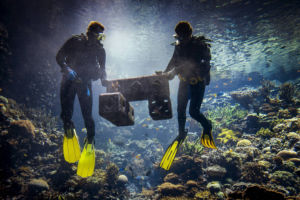Coming into effect January 1st, California’s new law will allow Indigenous populations to exercise their right to “good fire,” controlled burns designed to take care of the land. These low-intensity fires are proven to prevent catastrophic, widespread infernos, which have decimatedogenic climatic changes on the West Coast. The dry and overgrown buildup of vegetation fuels wildfires, so prescribed burns are deliberate in specific areas to control flames, promote vegetation growth, and prevent the intensity of the next wildfire. Indigenous populations have utilized these methods for centuries, but the United States views fire as dangerous and exterminated, forcing the creation of dense forests that fuel the destructive wildfires; climate change affects dry these forests and contributes to longer wildfire seasons.
According to Al Jazeera, states have recognized the benefits of prescribed burns, but the practice must scale up significantly to bring forests back into balance. The state of California has recently unveiled a $2 billion wildfire and emergency preparedness proposal for funding of equipment and firefighters, including $50 million for prescribed burns, a historic amount of allotted money in this area, according to a press briefing by California Governor Gavin Newsom. Thom Porter, Chief of Cal Fire wildfire agency, says that cutting and fuel reduction needs to be done across the landscape ahead of time to implement prescribed burns for California forests safely. Once there are areas safe to burn, fire will be reintroduced and will be the primary tool in the future. California has also authorized $20 million in funding to pay for damages if a prescribed burn gets out of control. The next step is for California and other states to ramp up the number of people trained to initiate burns.
Fire suppression rules have curtailed the ability of Indigenous communities to conduct traditional burns, and Native Americans still face persecution and penalty when they try to use fire in line with their tradition, even on public lands or reservations. Yurok tribal members have been separated from fire because the U.S. Forest Service controls their ancestral territory. Because suppression, development and climate change caused such dramatic changes in the forest, the group feels less connected to their homeland, history, and culture. Representatives of the Karuk Tribe say that without freely engaging in cultural burning practices, they risk losing their culture and slowly disappearing. Issues with this type of legislation arise in enforcement; private property reigns supreme in this country and is heavily enforced. Fires cannot be forced to burn due to potential conflict with an owner’s land management strategy or rights. Prescribed burns in California require permission from the landowner. While the new law removes liability for those conducting such burns if a basic set of conditions are met, any conduct deemed gross negligence will be held responsible.
California is not the first state to change its prescribed fire laws. Florida was one of the first states to implement a less stringent gross negligence standard. Several other states, including Nevada, Georgia, and Michigan, followed suit. Restoring Indigenous cultural burning practices isn’t a simple task. While there is increased recognition for how past fire suppression policies destabilized U.S. landscapes and cultures, dominant fire agencies and regulatory frameworks today still pose significant hurdles to the setting of cultural fires.




